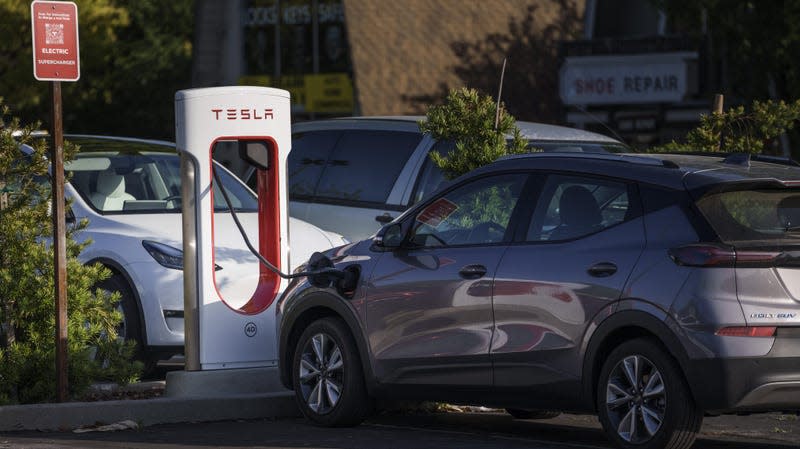America Needs To Overhaul Its Electrical Grid, And Not Just For EVs

A Chevy Bolt electric vehicle charges at a Tesla Supercharger in Scotts Valley, California, US, on Thursday, June 1, 2023. Tesla is making its ubiquitous Superchargers available to other EVs through new corporate partnerships and its Magic Dock.
Although EV sales in the U.S. have slowed, they still count for around 6.5 percent of the automotive retail market in the U.S. This year, experts predict EVs will hit the million mark in number of new vehicles sold. You may be wondering where all the juice for these EVs will come from, but it turns out that when it comes to the electrical grid, there are bigger fish to fry.
Axios has a break down on why updating the electric grid will be worth the mind-blowing amount of money. EVs are not the main concern of experts in the utilities field — its climate change and the age of the current system that should give Americans pause. In the near term, the U.S. produces plenty of electricity to keep EV Americans moving, according to the Union for Concerned Scientists:
Read more
The grid is well-equipped to supply energy to EVs at current adoption levels. Over 2.7 million plug-in hybrid and full battery-electric cars and light trucks were sold in the United States by the end of 2021, with the majority of those still on the road. Sales of cars and light trucks in 2022 so far have been strong, with battery electric sales hitting a striking new record, and bus and heavy truck sales are expected to pick up as well. Even in states with higher EV adoption currently, power demand from EVs is not causing issues. For example, California has reach 16.3% light-duty EV sales (totaling 1.14 million EVs on the road), and while California has been struggling to maintain grid reliability the past few years, increased electricity demand from EV charging load is not one of the problems.
But will the grid survive the near future with the aim of 50 percent of car sales being EV by 2030? Not without serious investment, which we will need with or without EVs.

 Yahoo Autos
Yahoo Autos 